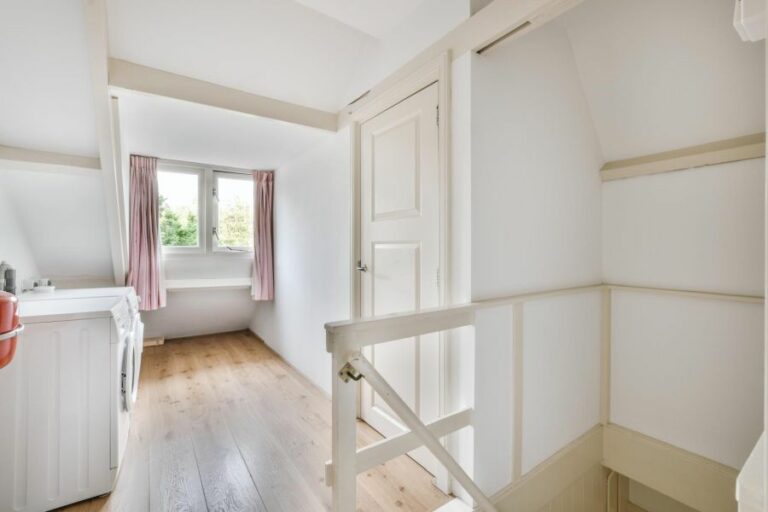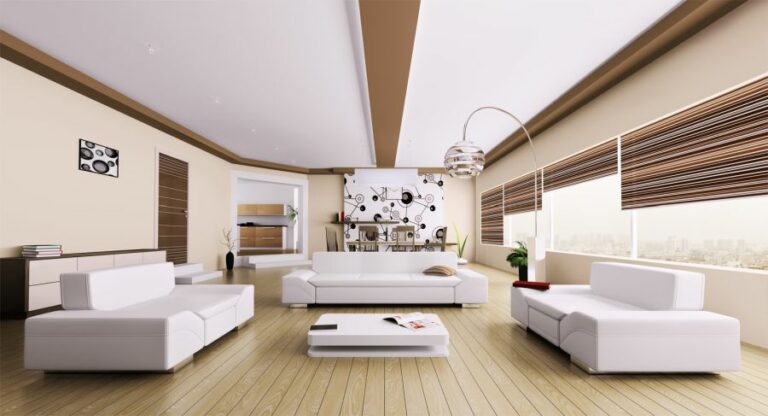Metallic Sheen In House Painting, 25 Things You Should Know
Are you looking to add a touch of modernity and elegance to your home’s interior design? A metallic sheen in house painting might be just what you need. Not only does it give your walls a unique, luxurious look, but it also creates a sense of depth and dimension. Fortunately, we have the inside scoop for achieving that perfect metallic finish.
Metallic sheen in house painting:
Metallic sheen in house painting refers to the use of special metallic paints that contain small metallic flakes, providing a unique, eye-catching finish while also offering increased durability and protection. These paints are popular for adding accents and depth to surfaces and come in various colors and finishes. However, metallic paints are more expensive than standard paints and may require specialized application techniques and maintenance.

Curious about incorporating metallic sheen in your house painting project? We’ve got you covered! Keep reading for an in-depth look at this unique design element and learn how to make your walls shine with style. Don’t miss out on this fantastic trend!
Contents
- 1 Metallic Shine for Home Paint Jobs
- 2 Is Metallic Wall Paint Visually Appealing?
- 3 Achieving a Metallic Wall Finish: Tips and Tricks
- 4 Understanding Metallic Paint Finishes
- 5 Key Benefits of Using Metallic Paint
Metallic Shine for Home Paint Jobs
• Understanding Metallic Paint
Metallic paints are specialty paints that contain small metallic flakes within the paint mixture, providing a unique and eye-catching finish. These flakes can be made of a variety of metals, such as aluminum, bronze, and copper, and are available in a wide range of colors.
Not only do metallic paints add an aesthetic appeal to the surfaces they are applied to, but they also serve a functional purpose by providing increased protection against damage from weather and environmental factors. This has made metallic paints increasingly popular for use in residential settings.
For more information about metallic paint, visit the Paint Quality Institute, an excellent resource that covers various aspects of paint types and application techniques.
• Advantages of Metallic Paint
– Aesthetic Appeal
One of the biggest draws of using metallic paint in house painting is the unique and eye-catching appearance it provides. The metal flakes within the paint catch the light and reflect it in various directions, creating a rich and multi-dimensional effect.
This can add depth, texture, and interest to any surface, making it a popular choice for adding an accent wall or feature to a room.
– Durability and Protection
In addition to its visual appeal, metallic paint also provides increased durability and protection to the surfaces it is applied to. The small metallic flakes within the paint act as a protective barrier, making the painted surface more resistant to damage from weather, UV rays, and other environmental factors.
This can help to extend the life of exterior surfaces and reduce the need for frequent repainting and maintenance.
– Versatility
Another advantage of using metallic paint in house painting is its versatility. Metallic paints are available in a wide range of colors and finishes, allowing for a high degree of customization. They can be used on various surface types, including walls, ceilings, and even furniture.
Furthermore, metallic paints can be mixed with other paint types or layered to create interesting and complex finishes.
• Tips for Using Metallic Paint
– Choosing the Right Paint
Before embarking on a metallic paint project, it’s essential to choose the right product for your needs. This means considering factors such as the type of surface the paint will be applied to, the desired finish, and the specific color and tone of the metallic sheen.
When selecting metallic paint, it’s also crucial to consider the quality of the product. High-quality metallic paints will contain a higher concentration of metallic flakes, which will result in a more even and reflective finish.
– Proper Surface Preparation
To get the best results from metallic paint, proper surface preparation is essential. This means ensuring the surface is clean and free from any contaminants, such as dust or grease, which could interfere with the paint’s adhesion.
Additionally, it’s important to prime the surface, as this will help create a smooth and even base for the metallic paint to adhere to.
– Application Techniques
The application technique is another critical factor in achieving a successful metallic paint finish. Many professionals recommend using a spray gun for applying metallic paint, as this can help achieve a more even and consistent finish compared to using a brush or roller.
When applying metallic paint, it’s crucial to use thin, even coats and allow for adequate drying time between coats. This will help to build up the metallic sheen and create a smooth, reflective surface.
• Potential Drawbacks and Limitations
While metallic paint can offer many benefits, it’s also essential to consider the potential drawbacks and limitations.
– Cost
One of the most significant limitations of using metallic paint in house painting projects is the cost. Metallic paints tend to be more expensive than standard paints due to the additional materials (metal flakes) in the paint formulation.
Additionally, the specialized application techniques required for metallic paint may also increase the overall cost of the project.
– Maintenance
While metallic paint does offer increased durability and protection, it is not entirely maintenance-free. Over time, the metal flakes within the paint may begin to oxidize, causing the metallic sheen to dull.
Regular cleaning and sealing can help to minimize this issue, but it’s something to consider when deciding whether metallic paint is the right choice for your project.
– Complexity
Achieving a professional and consistent metallic paint finish can be challenging, requiring specialized application techniques and experience. For those without prior experience using metallic paint, it may be worthwhile to enlist the help of a professional painter to ensure a high-quality result.
• The Final Verdict
Metallic sheen in house painting offers a unique and eye-catching way to enhance the aesthetics of a space while also providing increased durability and protection.
When considering whether metallic paint is the right choice for your project, it’s essential to weigh the benefits against the potential drawbacks and limitations. However, with the right planning and execution, a metallic paint finish can be a stunning addition to any home.
Is Metallic Wall Paint Visually Appealing?
Although some may argue that metallic paint only belongs on cars or in futuristic settings, its versatility and the wide range of available hues have become increasingly popular in interior design, making it a sophisticated addition to any home or office.
• Boosting Visual Appeal with Metallic Paint
The striking appearance of metallic paint is a result of its unique composition, which consists of a combination of pigments and reflective metal bits. These elements mingle together to create an opulent and radiant finish, effortlessly elevating the overall atmosphere of a space.
While some metallic paints achieve a shiny and reflective look, others may give off a more subtle, matte finish. The versatility of this paint type allows homeowners to create personalized interiors according to their preferences.
• Selecting the Ideal Shade and Finish
The wide range of colors and finishes available means that metallic paint can cater to virtually every taste and interior design style.
Classic metallic shades such as gold, silver, and bronze offer timeless sophistication, while more adventurous hues like teal and magenta add an artistic touch to any space.
Prioritize high-quality paint from reputable manufacturers to ensure a smooth and reflective finish, and use color swatches from your preferred paint brand to explore your options and select the shade that will best complement your interior design.
– Matte vs. Glossy
Depending on the overall aesthetic you wish to achieve, you may opt for a matte or glossy finish when selecting your metallic paint.
Matte metallic paints will provide a more subtle, muted appearance, while glossy finishes will make the metallic effect more pronounced and highly reflective. Both options can result in stunning effects when applied accordingly, lending sophistication and visual interest to your space.
• Applying Metallic Paint for Optimal Results
For a smooth and professional-looking finish with metallic paint, proper preparation and application techniques are essential.
Improper execution can lead to an uneven appearance, detracting from the paint’s visual appeal. Adhere to the following recommendations to ensure that your metallic paint job achieves the desired effect.
– Preparing the Surface
Before applying any paint, ensure that the surface is clean, dry, and free of any imperfections. In addition, it is crucial to use a high-quality primer formulated specifically for metallic paint.
The primer should be tinted to match or complement the color of your chosen metallic paint, as this will help to achieve a consistent and even finish.
– Using the Right Tools
The right tools can significantly improve the quality of your metallic paint application. Invest in high-quality brushes or rollers made specifically for use with metallic paint, as these will aid in a smoother, more even application.
Furthermore, a paint tray designed for metallic paint often comes with a special well that helps to maintain the proper distribution of metallic flakes, resulting in a more consistent finish.
• Durability and Maintenance
When applied correctly and maintained well, metallic paint can be remarkably durable, making it an excellent addition to high-traffic areas of your home or office. Many top-quality metallic paints are formulated to resist fading and chipping, ensuring that their radiant finish lasts for an extended period.
For optimal longevity, it is recommended to clean the walls gently with a non-abrasive cloth and mild soap and water mixture if needed.
• Creating Accent Walls and Other Decorative Features
Metallic paint can also be used to create eye-catching accent walls or to highlight architectural elements such as crown molding and wainscoting.
By using metallic paint in combination with other techniques such as stenciling, glazing, or layering with other paint colors, you can achieve stunning effects that elevate your space and showcase the unique visual appeal of metallic paint.
In conclusion, metallic paint can be a sophisticated and visually stunning addition to your home or office, provided that it is selected, applied, and maintained correctly. With proper execution and care, metallic paint can create an opulent and inviting atmosphere that stands the test of time.
Achieving a Metallic Wall Finish: Tips and Tricks
A metallic finish on walls brings an elegant and vibrant touch to any space. Whether you’re looking to enhance a feature wall, create a sophisticated atmosphere, or add a touch of glamour, achieving a metallic finish on your walls can be the perfect solution.
• Types of Metallic Finishes
– Metallic Paint
One way to achieve a metallic finish on walls is by using metallic paint. Metallic paints are available in a range of colors and can be used alone or in combination with other paints for a layered effect. They provide an excellent metallic sheen and are easy to apply with a paintbrush, roller, or spray paint.
Application Tips:
- Always start by preparing the surface by cleaning, repairing any damage, and applying a primer if necessary.
- Mix the metallic paint thoroughly before applying it to the wall.
- Apply in thin, even coats, making sure to avoid visible brush strokes or roller marks.
- Allow each coat to dry completely before applying additional coats for increased coverage and depth of color.
– Metallic Plaster
Metallic plaster is another option for achieving a metallic finish on your walls. This material is a pre-colored, ready-to-use plaster that offers a more textured, artisanal finish.
The application technique you choose will determine the final appearance of the metallic plaster, making it a versatile option capable of accommodating a variety of styles.
Application Tips:
- Prepare the surface by removing any dirt, filling in any holes or cracks, and applying a coat of primer.
- Use a stainless-steel trowel to apply the metallic plaster in thin, even layers, building up texture as you go.
- Experiment with different application techniques, such as stippling, dragging, or cross-hatching, to achieve your desired look.
– Metallic Foil or Leaf
For a truly stunning metallic finish, consider using metallic foil or leaf. This technique involves applying a thin layer of genuine or imitation metal leaf to the wall, creating a luxurious and eye-catching effect. Metallic foils or leaves are available in a range of metals, including gold, silver, and copper.
Application Tips:
- Prepare the wall by ensuring it is clean, smooth, and free of any defects.
- Apply an adhesive specially formulated for metallic leaf to the wall, following the manufacturer’s instructions.
- Carefully apply the metallic foil or leaf to the adhesive, using a soft brush to smooth it onto the surface and remove any air bubbles or wrinkles.
- Once the adhesive is dry, seal the surface with a clear topcoat to protect the delicate metallic finish.
• Tools and Materials
Some essential tools and materials you’ll need for creating a metallic finish on your walls include:
- Metallic paint, plaster, or foil/leaf
- Paintbrushes, rollers, or stainless-steel trowels (depending on the chosen application method)
- Paint tray or mixing containers
- Painter’s tape and drop cloths
- Surface primer
- Adhesive and topcoat (for metallic foil or leaf application)
• Considerations and Recommendations for Metallic Finishes
Before embarking on your metallic finish project, it’s important to consider the following factors:
- Choose the right technique: Consider the desired final look, your skill level, and your available budget when choosing the type of metallic finish to apply to your walls. Metallic paint is generally the easiest and most budget-friendly option, while metallic leaf is the most high-end and luxurious.
- Practice before committing: Before applying a metallic finish to your walls, practice on a test board or small, inconspicuous area to ensure you’re happy with the result and comfortable with the technique.
- Choose the right color: Be thoughtful in your color selection, taking into account the room’s size, lighting, and overall design. Lighter metallic colors can make a space appear larger, while darker shades create a more intimate atmosphere.
- Consider professional help: If you’re unsure of your ability to achieve a professional-looking result, consider hiring a skilled painter with experience in creating metallic finishes.
- Proper surface preparation: Good surface preparation is crucial for the success of any paint or plaster application. Making sure your walls are clean, dry, and free of defects will ensure a smooth and even final result.
The Paint Quality Institute offers a wealth of information on paint finishes and techniques, providing valuable guidance on achieving a professional finish for your walls.
A metallic finish can make a stunning impact on any interior space. By carefully selecting the appropriate technique and making the necessary preparations, you can achieve a result that imbues your walls with elegance and sophistication.
Step | Instructions |
|---|---|
1 | Choose a metallic paint. Metallic paints usually come in either water-based or oil-based options. |
2 | Prepare the surface. Clean the walls and make sure it’s free of dirt, grease, and any other imperfections. |
3 | Apply a base coat. Use a color that closely matches the metallic paint for an even finish. |
4 | Mix the metallic paint. Stir the paint to distribute the metallic particles evenly. |
5 | Apply the first coat. Use a high-quality roller or paintbrush to apply the paint in thin coats. |
6 | Allow the first coat to dry. Check the manufacturer’s instructions for drying time. |
7 | Apply additional coats. Repeat the process until the desired metallic finish is achieved. |
8 | Finish with a protective topcoat (optional). This helps protect the metallic paint and maintain its appearance. |
Understanding Metallic Paint Finishes
A metallic paint finish is a type of automotive paint that incorporates small metallic particles within the paint, resulting in a sparkling appearance. This finish has become quite popular in recent years, mainly because of its eye-catching and unique appearance.
The metallic particles within the paint not only add depth and texture to the color but they also create a shimmering effect when the vehicle is exposed to light.
• Properties of Metallic Paint
Metallic paint finishes contain small, aluminum powder-like particles responsible for its characteristic shimmering effect.
These particles reflect and scatter light when exposed, giving the surface a sparkling appearance. Metallic finishes are available in a wide range of colors, allowing for versatility in design choices.
There are additional properties to metallic paint that make it a popular choice for many:
– Durability
Due to the aluminum particles in the paint, a metallic finish provides added durability and resistance to the vehicle’s surface. The additional layer helps protect the car from minor scratches and chips, as well as UV light exposure, which can cause colors to fade over time.
– Hidden Imperfections
A metallic finish has the ability to hide small imperfections on the surface of a vehicle due to its light-reflective properties. The shiny, reflective surface makes it more difficult for small dents, scratches, or other damage to be noticeable.
– Resale Value
Many vehicle owners find that a metallic paint finish adds to the resale value of their car. The unique appearance and increased durability make it an appealing choice for potential buyers.
• How is Metallic Paint Applied?
Applying a metallic paint finish requires a multi-step process involving both base and clear coats of paint. This section outlines the process in detail.
1. Surface Preparation
Before applying a metallic finish, it is essential to properly prepare the surface of the vehicle. This involves cleaning the surface to remove dirt, grease, and other contaminants and then sanding it to create a smooth, even surface. Any dents or scratches must also be repaired at this stage.
2. Undercoat Application
An undercoat, or primer, is applied to the surface of the vehicle to provide a strong foundation for the metallic paint to adhere to. This step ensures that the paint will bond correctly and evenly, minimizing the chance of paint peeling or chipping.
3. Base Coat Application
The base coat is the first layer of the metallic paint finish, and it is where the metallic particles are added. The base coat is mixed with the chosen color and applied to the surface of the vehicle in several thin layers, allowing each layer to dry before applying the next one.
It’s essential to maintain even application, as inconsistencies in the base coat can lead to an uneven metallic appearance.
4. Clear Coat Application
After the base coat has been applied and allowed to dry completely, a clear coat is applied to the vehicle’s surface. This protective layer seals in the metallic particles and provides additional protection against damage, maintaining the finish’s integrity for a longer period.
• Maintenance of Metallic Paint Finishes
To keep a metallic paint finish looking its best, proper maintenance is crucial. Here are some recommendations to help preserve the appearance and longevity of the finish.
– Regular Washing
Frequent washing can help remove dirt, grime, and other contaminants that may deteriorate the paint over time. It’s important to use a gentle, pH-balanced car wash soap to prevent stripping the protective clear coat layer.
– Waxing and Polishing
Periodic waxing and polishing help maintain the paint’s integrity, protecting it from scratches, fading, and oxidation. Use a high-quality car wax or paint sealant designed for metallic finishes to ensure the best results.
– Avoiding Paint Damage
Whenever possible, park your vehicle in a garage, under a carport, or at least in a shaded area, helping protect the metallic finish from prolonged sun exposure, which can lead to fading or dulling.
Additionally, avoid parking near sprinkler systems, as hard water spots can potentially damage the paint; if water spots occur, remove them promptly using a proper cleaning solution and microfiber cloth.
• Final Thoughts
In conclusion, a metallic paint finish is a popular and attractive option for many vehicle owners. The durable and eye-catching appearance can enhance the visual appeal of any car while also offering increased protection against damage.
Proper application and maintenance are key to preserving the beauty and longevity of a metallic paint finish.
For further information on metallic paint finishes, visit this informative article from the Chemistry LibreTexts Library.
Key Benefits of Using Metallic Paint
• What is Metallic Paint?
Metallic paint, also known as metal flake or polychromatic paint, is a type of automotive paint that contains small metallic flakes mixed into the paint. These flakes are typically made from a variety of materials, such as aluminum, copper, bronze, or mica.
The purpose of including these flakes is to provide a distinct, sparkling finish that sets metallic paint apart from traditional, solid-colored paints.
• Aesthetic Appeal
One of the primary reasons for choosing metallic paint is its unique and appealing appearance. The metallic flakes embedded within the paint create a beautiful, shimmering effect that catches the light and creates a depth to the color that is not achievable with regular, non-metallic paints.
– Visual Depth
The particles of metal present in the paint job contribute to its exceptional visual depth. These particles reflect light in a way that makes the paint color appear rich and multi-dimensional.
This creates an alluring effect that is especially noticeable when viewed from different angles and under different lighting conditions.
• Superior Durability
Although the primary purpose of metallic paint is its aesthetic appeal, it also offers other advantages. One of these is the enhanced durability of a metallic paint job as compared to conventional paints.
– Protection from Ultraviolet Rays
Metallic paint provides a higher degree of protection against harmful ultraviolet (UV) rays from the sun. The metallic flakes within the paint help to scatter and reflect UV radiation more effectively than other types of paint, reducing the potential for paint to fade over time.
This added protection is especially important for vehicles that are often exposed to the sun and other harsh environmental conditions.
– Scratch and Chip Resistance
Metallic paint helps protect a vehicle’s surface from scratches and chips by dispersing any impact force across a wider area, thanks to the metal flakes in the paint. As a result, metallic paint can be more resistant to minor surface imperfections than standard paints.
However, it is important to note that this added durability is not guaranteed, as different factors, such as paint quality, application, and maintenance will also influence the metal paint’s protective capabilities.
• Better Concealment of Imperfections
Another advantage of metallic paint is its ability to better conceal small imperfections on the surface of a vehicle. The reflective nature of the metallic flakes makes it more difficult for the eye to pinpoint any minor blemishes or irregularities present on the painted surface.
This can be particularly useful for older vehicles or those with less-than-perfect bodywork, as the metallic paint may help to mask any signs of wear and tear.
• Paint Considerations and Maintenance
While metallic paint offers several benefits, it is essential to be aware that it may require additional care and maintenance compared to non-metallic paint jobs.
– Repair
Repairing a metallic finish can be more challenging due to the complexity of the paint and its unique appearance. When conducting a repair, it is crucial to accurately match the paint color and effect, which may require additional steps and expertise compared to repairing standard, solid finishes.
– Maintenance
To maintain the appearance and longevity of a metallic paint job, regular cleaning and maintenance are recommended. Using appropriate cleaning and waxing products can help protect the paint and preserve its distinctive appearance.
It is also advised to avoid using abrasive cleaning or polishing products, as these can damage the metallic finish.
– Cost
It is worth noting that metallic paint is often more expensive than regular, non-metallic paint. The added cost can be attributed to the specialized materials and application process required to achieve the metallic finish.
• Closing Thoughts
In conclusion, metallic paint serves various purposes, including a unique and aesthetically appealing appearance, enhanced durability, and better concealment of surface imperfections.
However, it is essential to consider factors such as the increased cost and maintenance needs when deciding whether a metallic paint job is suitable for your needs.
As with any automotive paint choice, it is crucial to carefully weigh the pros and cons and consult with a professional to make an informed decision about the best paint option for a vehicle.







